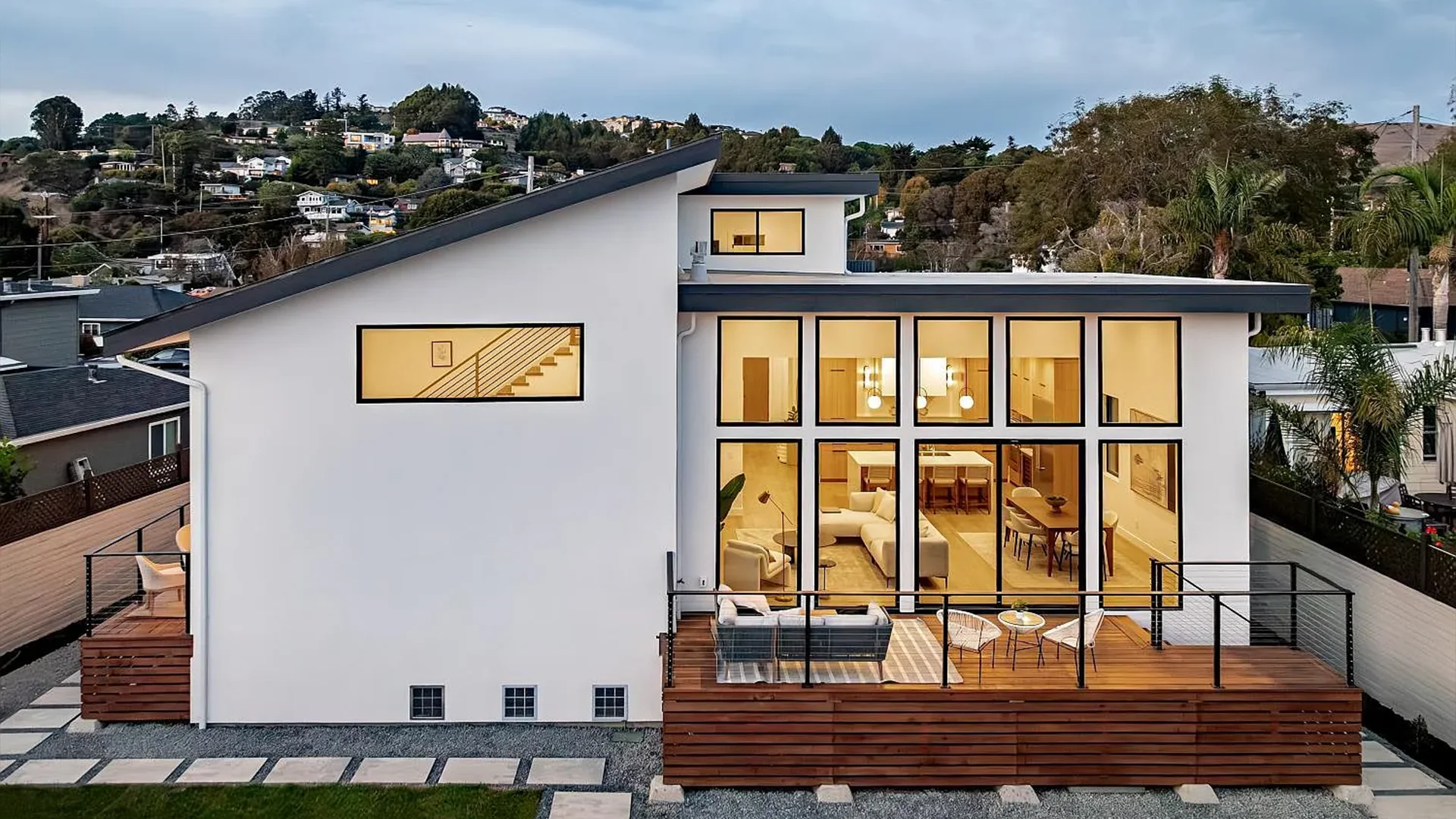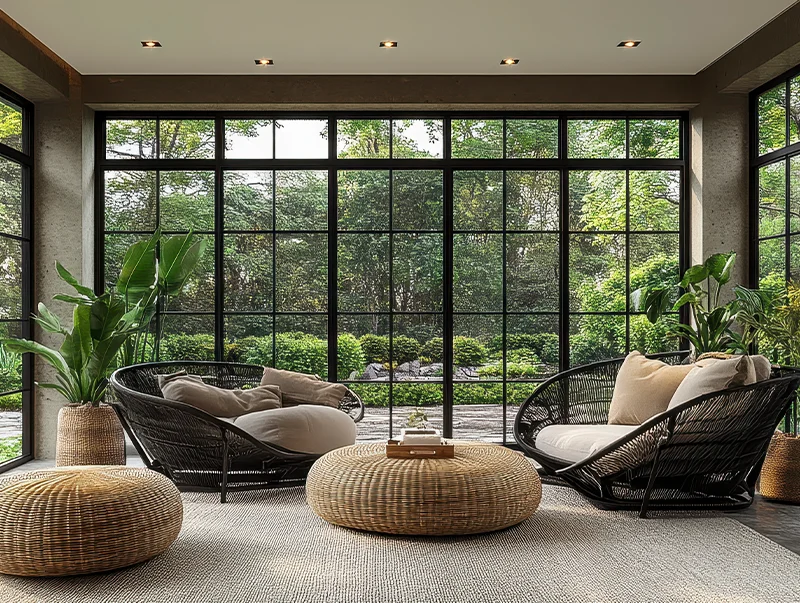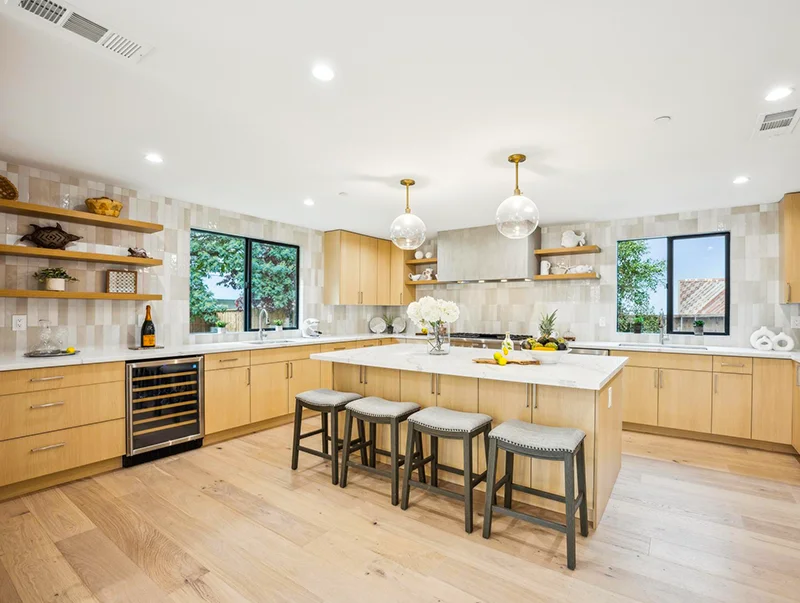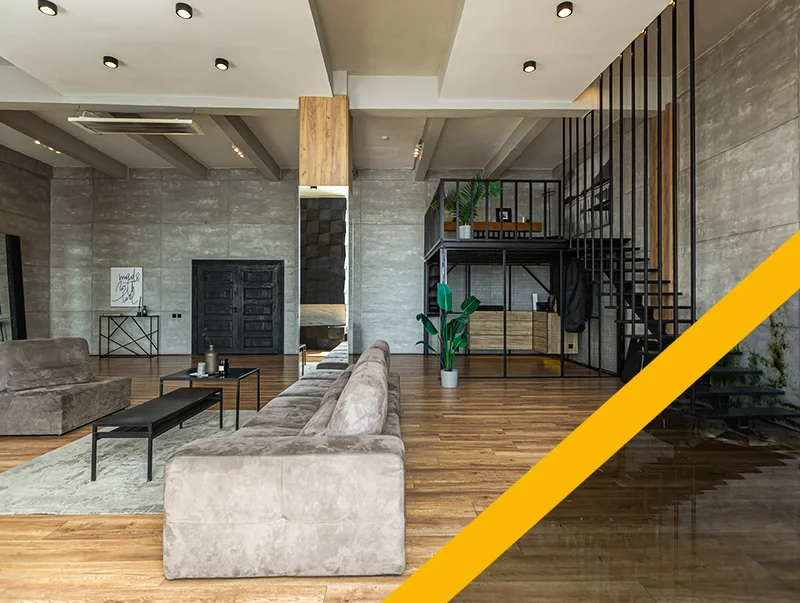You don’t have to leave a neighborhood you love just because you’ve outgrown your home. For many Northern California families, a well-planned room addition is the smarter move—more space, better function, and a design that actually fits how you live now. This guide walks you through the decisions, codes, timelines, and practical trade-offs, using local realities and how Global Arch Construction delivers additions from feasibility to final inspection.
We’ll keep this simple, honest, and useful. No jargon. No false promises. Just a clear path to more room—without moving.
What Counts as a Room Addition in California
A room addition is new conditioned living space permanently attached to your home—think a larger kitchen, a new bedroom suite, or a family room extension. It’s different from finishing existing space (like an attic) and from building a detached Accessory Dwelling Unit (ADU).
Key points:
- Conditioned space means it’s heated/cooled; it must meet energy code (Title 24), ventilation, insulation, and egress requirements.
- Structure matters. Even small bump-outs often need new footings, shear walls, and roof tie-ins to keep the building strong and weather-tight.
- Permits are required. Most projects involve Building, and sometimes Planning if you touch setbacks, height, or exterior changes.
Where do ADUs fit? ADUs work best for rental income or fully independent living. If your goal is to expand shared family space, a room addition usually makes more sense.
Choosing the Right Way to Add Space
Different addition types solve different problems. Start with how you want life to feel at home, then pick the building approach that delivers it with the least friction.
Bump-Outs & First-Floor Expansions
Great when you need a little more—like a bigger kitchen, a walk-in pantry, or room to breathe in the living area. Structural work is typically lighter than a second story, and disruption can be managed with smart phasing and dust control. Watch for:
- Foundation extensions and new footings
- Shear/braced wall requirements at openings
- Waterproofing where roofs meet walls
Second-Story Additions
Best when lot coverage or setbacks block you from expanding outward. You’ll gain major square footage without giving up yard space. Expect:
- Structural upgrades to carry new loads
- Stair placement planning and natural-light strategies
- More disruption than a small bump-out; temporary housing could be wise during certain phases
Garage Conversions
A fast path to a bedroom suite, office, or studio—especially in Bay Area cities where lot sizes are tight. The trade-offs:
- Moisture control and slab insulation are non-negotiable
- Proper egress and fire separation are critical
- Parking or neighborhood rules may come into play
Interior Conversions (Attic/Basement)
Great when the structure, headroom, and egress work in your favor. If not, the cost to fix those can rival a small addition—so feasibility comes first.
When an ADU Is the Better Move
If you want rental income, multigenerational privacy, or space that can be separated long-term, a detached or attached ADU might beat a standard addition. We help you weigh zoning, parking, and utility requirements against the financial upside.
Budget Drivers & Timeline Reality (Northern California)
We won’t price your project in a blog post—and we won’t pretend to. Instead, here are the drivers that shape your budget and schedule so you can plan realistically.
Scope & Structure
- Footings, beam sizes, shear/hold-downs, and roof tie-ins dictate not just material cost but sequence and inspection frequency.
- Openings (big sliders, window walls) look simple on paper but often require engineered solutions and careful weatherproofing.
Systems & Finishes
- Windows/doors (performance, size, and brand) affect energy modeling and comfort.
- HVAC upgrades or re-balancing keep the new room comfortable without starving the rest of the house.
- Electrical capacity: panel upgrades are common when adding a suite or expanding a kitchen.
Access & Phasing
- Tight lots, limited staging, and occupied homes require surgical phasing, more protection, and extra time.
- Inspections and specialty trades have to be scheduled in the right order to keep momentum.
Seasonality
- Northern California’s rain and coastal fog windows influence exterior sequencing; we plan envelope work to avoid water risk.
Typical Durations (Construction Only)
- Small bump-outs: ~2–3 months after permit issuance
- Larger first-floor additions: ~3–5 months
- Second-story additions: ~4–6+ months
Complex city reviews and long-lead materials can extend these—planning early helps us lock timelines down.
Permits, Codes & HOA—City-Specific Expectations
A complete submittal avoids back-and-forth. Your permit set typically includes architectural plans, elevations/sections, structural calculations, Title 24 energy documentation, CALGreen compliance, and MEP sheets. Some jurisdictions add Planning review or neighbor notices.
Sacramento Region
Bay Area Snapshots
- San Francisco: Expect Planning involvement and neighbor notifications for many exterior changes; 3–6 months is not unusual before Building permits issue.
- San Rafael/Marin County, Mill Valley: Planning review is common; allow 4–8+ weeks at minimum.
- Palo Alto, Redwood City/San Mateo, Daly City: Heavier front-end review; 6–10+ weeks is realistic depending on complexity.
HOAs
If you have an HOA, plan on 2–6 weeks for architectural review on top of city timelines. We sequence HOA and city steps so one doesn’t stall the other.
Structure, Seismic & Energy—Designing It Right the First Time
Northern California homes live with seismic risk, coastal moisture, and energy performance requirements. The best insurance against change orders is doing the hard thinking up front.
- As-builts & early structural walk. We document what’s there (not what we hope is there), check soils, footings, and load paths, and flag any required hold-downs or pads before finalizing scope.
- Seismic bracing. Strategic shear walls, hardware (Simpson Strong-Tie), and diaphragm tie-ins keep the whole building working as a system.
- Title 24 modeling early. We run energy calcs before you fall in love with a window wall that the model won’t support—or we propose assembly upgrades (glazing, insulation, HVAC) that get you there.
- MEP coordination. Load calcs, panel capacity checks, duct layout, and ventilation plans happen before framing, not after drywall.
Materials & Systems We Trust (and Why)
We specify proven products that hold up to inspections—and to your daily life.
- Waterproofing (wet rooms): RedGard, Schluter® KERDI, LATICRETE® HYDRO BAN®
Why: Continuous waterproofing membranes and integrated drain systems cut leak risks and callbacks. - Deck/Balcony Systems: Tremco Vulkem®, Westcoat ALX
Why: Robust multi-coat assemblies for walkable, long-life waterproof surfaces. - Windows & Doors: Marvin, Andersen, Milgard
Why: Reliable performance, solid warranties, and options to meet Title 24 without compromising design. - Weather Barriers & Sheathing: Huber ZIP System®, Henry Blueskin®, Tyvek®
Why: Better air/water management and cleaner inspections with integrated flashing strategies. - Roofing: GAF Timberline HDZ®, Malarkey Vista®
Why: Proven shingle systems with strong wind/warranty profiles and clean install details. - Connectors & Hardware: Simpson Strong-Tie®
Why: Code-accepted, inspector-friendly, and designed for seismic performance.
These choices aren’t brand worship—they’re risk management. Fewer failures. Smoother inspections. Longer life.
How Global Arch Construction Manages the Whole Journey
You’ll work with one team from first walk to final punch list. No handoffs between separate firms. No “who owns this problem?” moments.
- Feasibility & Fit
- We confirm setbacks, height limits, lot coverage, WUI exposure, and HOA rules.
- Early Title 24 and structural checks steer design before you spend on the wrong path.
- Design That Solves Real Life
- Interior layouts that improve flow, storage, ventilation, and daylight—not just square footage.
- Options and visuals so you can choose with confidence.
- Permits—Complete, Clear, Compliant
- Full submittal sets (plans, structural calcs, Title 24, CALGreen, MEP) tailored to your city’s checklist.
- We handle plan comments and resubmittals; you see progress, not paperwork.
- Construction—Clean, Sequenced, Communicated
- Dedicated project management and a clear schedule with milestones.
- Dust control, protected paths, and jobsite cleanliness to respect your daily life and neighbors.
- Change-order guardrails: when scope must change (e.g., hidden conditions), we show options and cost deltas with no surprises.
- Quality Closeout & Warranty
- Final inspection checklist, client walkthrough, and a maintenance guide tailored to your finishes.
- We remain your point of contact—no disappearing acts.
We self-perform most scopes (design, interiors, framing, mechanicals, roofing, stucco, windows/doors, surfaces, paint, tile, finish work) and coordinate specialized partners for structural engineering, Title 24, and fire sprinklers when required.
Living Through Construction with Less Disruption
You can often stay in your home—especially for first-floor additions and garage conversions. Here’s how we make that easier:
- Phasing plan that keeps kitchens and baths usable as long as possible.
- Temporary walls & dust control with negative air where appropriate.
- Safe daily paths for you, kids, pets, and deliveries.
- Weekend or off-hour options where it helps momentum and reduces impact.
- When to relocate temporarily: second-story framing, major roof tie-ins, or panel upgrades are common triggers for a short stay elsewhere. We’ll tell you early so you can plan.
Proof in Local Conditions—Recent Project Snapshots
Roseville — Bathroom Addition
We expanded a bath and matched the existing roofline so the addition felt original. Our team handled design → permit → build, coordinating waterproofing and ventilation upgrades to meet code while improving comfort and longevity.
Roseville — Full Remodel + Additions (≈798 sq. ft.)
A larger family needed better access and universal design touches. We integrated ADA-minded elements, expanded common areas, and sequenced work to minimize downtime. The dedicated ADU permit is processing in parallel to unlock future flexibility.
San Francisco — Garage Conversion (Bed + Private Shower)
Tight lot, tight timeline. Moisture control and egress were the big challenges, solved via slab insulation upgrades, integrated membrane shower assemblies, and a ventilation plan tuned to foggy microclimates. A clean design-build path kept city comments minimal.
Every home is different. What these share is a method: confirm constraints early, design to real code and real life, and build with systems that last.
After You Move In—Care & Maintenance That Extend Life
Additions age well when you give the envelope and systems a little love:
- Gutters & drainage: Clean twice a year; verify downspouts route water away from the foundation.
- Sealants & grout: Inspect annually; reseal stone and high-use grout lines every 1–2 years.
- HVAC: Replace filters every three months (or per manufacturer); schedule annual service to keep airflow balanced and efficient.
- Windows/doors: Clear weep holes, check weather-stripping, and lubricate hardware; repaint exterior wood per product spec.
- Exterior finishes: Follow paint and siding care schedules; spot-check for hairline cracks on stucco after the first season and address quickly.
A 30-minute seasonal check saves years of wear and multiple service calls.
What Happens Next
Before anyone drafts blueprints, we start with feasibility:
- Zoning & Planning reality check (setbacks, height, lot coverage, WUI, HOA).
- Early schematic layout to prove the idea works for flow, light, and structure.
- Preliminary budget range informed by structure, systems, and finish level.
From there, Global Arch Construction manages everything—design → permits → construction → inspections → warranty—so you get more room with less stress.
Ready to explore your options?
Book a feasibility consult. We’ll confirm what’s possible on your lot, share a preliminary layout, and outline a realistic timeline and budget drivers. One team. One plan. Start to finish.
FAQ
Do I need Planning approval or just a Building permit?
It depends on exterior changes, setbacks, height, and design guidelines. We check zoning first; when Planning is required, we build that time into your schedule and sequence submittals to avoid stalls.
How does Title 24 affect windows and HVAC?
Energy modeling sets minimum performance for glazing, insulation, and mechanicals. We run it early so your design meets code without sacrificing comfort or light.
Will I need to upgrade my electrical panel?
If you add a bedroom suite, large kitchen loads, or electric appliances, a panel upgrade is common. We do a load calculation early to confirm.
How long will my home be disrupted?
Small additions are often 2–3 months of on-site work; larger or second-story projects take longer. With phasing and protection, you can often stay in place—except during certain structural or electrical milestones.
What triggers neighbor notices or HOA reviews?
San Francisco and many Bay Area cities require neighbor notices for exterior changes; HOAs typically review visible alterations. We coordinate both so neither delays your permit.
Global Arch Construction is here to help you add space, value, and comfort—without moving. Let’s make your home fit your life again.




